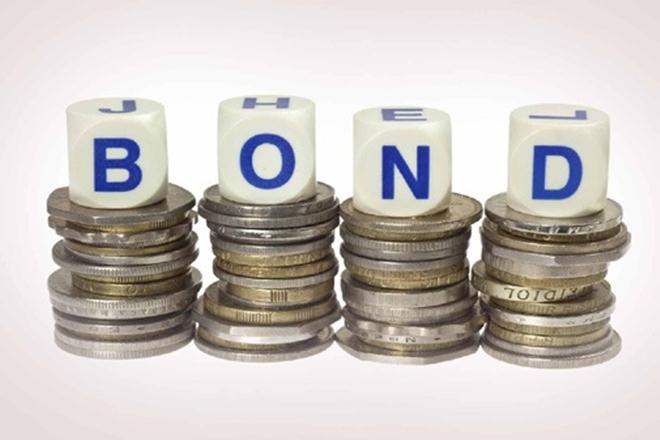[ad_1]
In the recent equity sell-off, U.S. Treasuries are back with a vengeance, and bringing with them the decisive return of a relationship investors have counted on for decades: When stocks go down, bonds tend to go up and vice-versa.
BlackRock Inc. says it’s once again a good idea to have Treasuries in a portfolio, while the likes of HSBC Private Bank, JPMorgan Asset Management and Wells Fargo Asset Management also tout fixed-income as a shelter from stormy stocks, whose volatility last month jumped to a 10-month high.
The inverse correlation between stocks and bonds has underpinned the favorite and most simple diversification strategy of fund managers across the globe — until last year when both markets fell together in 2018, a two-decade rarity.
“We think the negative correlation is here for now,” said Brian Jacobsen, a senior investment strategist at Wells Fargo Asset Management, which oversees about $500 billion in assets. “While the relationship can change on any given day or over any given week, until we get closer to the end of the Fed’s hiking cycle, we think the relationship is one that will continue to play out.”
Different Sell-Off
Tighter monetary policy, U.S. government borrowing in over-drive and inflationary fears lifted yields last year, raising the specter of a regime shift unkind to the traditional equity-bond dynamic.
Treasuries are proving their muster once more as fundamentals crater, with the latest rout in stocks driven by fears of a global slowdown that’s prompted traders to scale back expectations for Federal Reserve interest-rate hikes, a buy signal for Treasuries.
That’s a far cry from sell-offs in the second half of last year, where interest-rate fears weighed on both stocks and bonds, according to Willem Sels, chief market strategist at HSBC Private Bank.
“The return of negative correlations is good news, as diversification was hard to achieve in 2018,” said Sels, who’s gravitating toward havens and hedges. He’s overweight gold, likes quality stocks and is sticking to shorter-term bonds that are less sensitive to changes in interest rates.
Responding to Fears
Thushka Maharaj, a global multi-asset strategist at JPMorgan Asset Management, says the late-cycle dynamic — monetary tightening in response to inflationary pressures — tends to challenge the vanilla bond-equity link. But it ultimately proves self-stabilizing thanks to policy redress.
Indeed, following the December plunge in U.S. stocks, the U.S. Federal Reserve Chairman Jerome Powell said central-bank policy is flexible and officials are “listening carefully” to financial markets.
“In the current inflation-targeting regime where central banks are credible, we find it hard to see prolonged periods where inflationary concerns make returns in both stocks and bonds negative at the same time,” Maharaj said by email. “A key view we hold is that bonds act as a diversifier in the event of negative growth shocks and the negative stock-bond correlations will reassert in growth slowdown scares or recession fears.”
Foolproof No More
In a low-return world, there are plenty of reasons to fret the fortunes of traditional 60/40 portfolios — but the prospect of bonds losing their hedging firepower could prove the last straw.
With stocks forecast to post paltry gains and bonds expected to generate not much more than their coupons this year, Christophe Donay at Banque Pictet & Cie SA has turned to other hunting grounds — namely real-estate and private equity.
“This is the first time in my career that I have seen such a breakdown of correlations between bonds and stocks,” said Donay, the head of asset allocation and macroeconomic research at Pictet, whose career has spanned three decades. “We decided to diversify to illiquid assets because of the poor returns in bonds and stocks.”
So-called “endowment style” investing — designating one-third each to stocks and bonds, and another third to illiquid assets — is supplanting 60/40 in many of his funds, he said.
Wells Fargo’s Jacobsen remains a believer in diversification. A balanced portfolio may have lost money last year, but less than if investors had put everything into equities.
After suffering its worst year in a decade, DFA’s Global Allocation 60/40 Portfolio is bouncing back and reversed course in late December.
“Diversification just changes the trade-offs investors face,” Jacobsen said. “In hindsight, those trade-offs could be like trading a slap in the face for a punch in the gut.”
(Updates with stock volatility in third paragraph.)
To contact the reporter on this story: Ksenia Galouchko in London at kgalouchko1@bloomberg.net
To contact the editors responsible for this story: Blaise Robinson at brobinson58@bloomberg.net, Cecile Gutscher, Sid Verma
For more articles like this, please visit us at bloomberg.com
©2019 Bloomberg L.P.
The iShares 7-10 Year Treasury Bond ETF (IEF) was trading at $103.79 per share on Wednesday afternoon, down $0.06 (-0.06%). Year-to-date, IEF has declined -1.02%, versus a -2.68% rise in the benchmark S&P 500 index during the same period.
IEF currently has an ETF Daily News SMART Grade of B (Buy), and is ranked #15 of 28 ETFs in the Government Bonds ETFs category.
This article is brought to you courtesy of Yahoo Finance.
[ad_2]
Source link Google News

